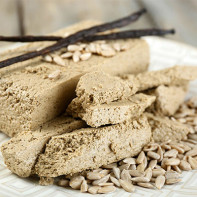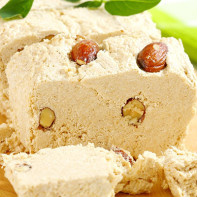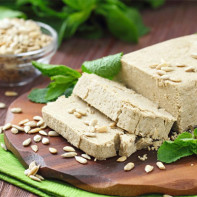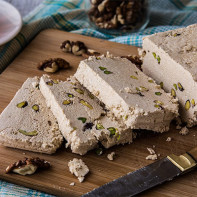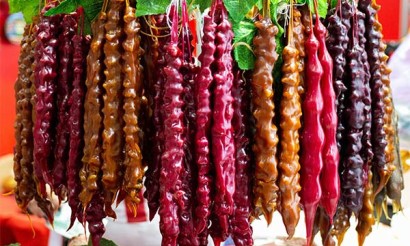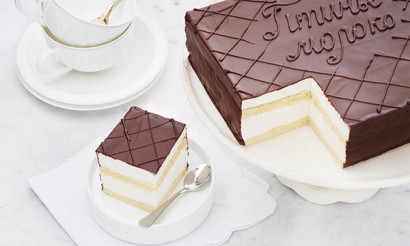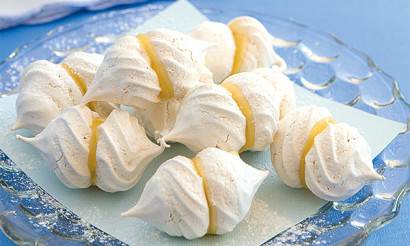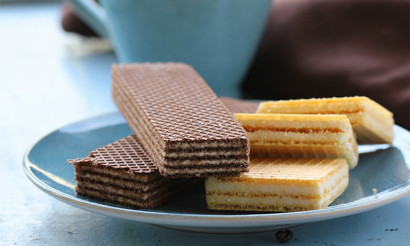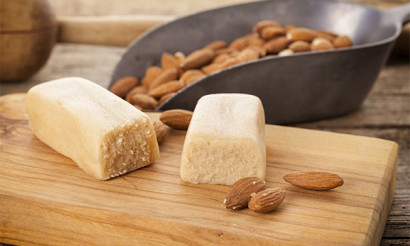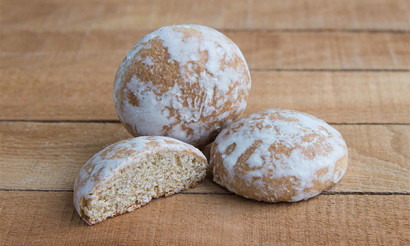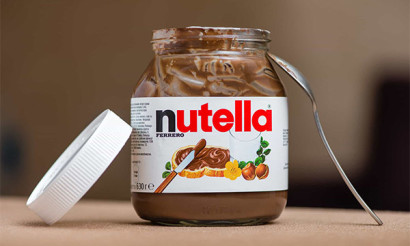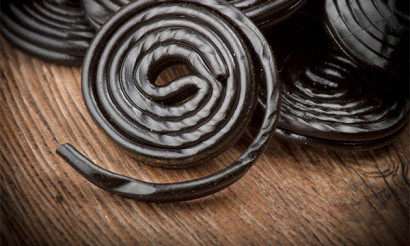Halva: useful properties and contraindications
It is unlikely to find a person who has not tried halva. We can safely say that this sweet likes almost everyone. Homeland of this dessert - Iran, and the literal translation - "sweet. The history of halva is more than 7 thousand years old. The success of the product lies in the fact that it has a long shelf life, while it does not require special conditions.
- What is halva and how it is made
- Types
- How much you can eat halva a day
- Composition and calories
- What is the usefulness of sunflower halva
- For Women
- For Men
- For Pregnancy
- Breastfeeding
- For children
- Sesame Halva: Benefits and Harm
- The benefits and harms of peanut halva
- Is it possible to eat halva when losing weight
- Halva in medicine
- Diabetes mellitus
- In pancreatitis
- For gastritis
- For the bowel
- For constipation
- For gout
- For colitis
- For hemorrhoids
- For the liver
- For cholecystitis.
- Harm and Contraindications
- How to choose and store
- How to make halva at home
- Can I eat halva during Lent
- Interesting Facts about Halva
This is interesting! Going on a long journey, the ancient Iranians necessarily took halva with them, because it is nutritious and quickly satisfies hunger.
What is halva and how it is made?
If we talk about what is this wonderful dessert, so it is, in fact, a mixture of different seeds and nuts. The base is the protein mass of oilseed crops and caramelized sugar. The latter is used in industrial production, at home it can be replaced by honey.

Composition:
- Protein mass, which is a paste of ground seeds or nuts.
- Caramel mass, usually caramelized sugar, molasses or honey.
- Foaming agent, which is used to give the halva porosity and structure. Most often it is the root of marshmallow or licorice.
How to make halva
The preparation of halva is carried out in several stages:
- Peeling the seeds or nuts.
- Drying and roasting to a golden color. The moisture content should not exceed 2%.
- Grinding. The seeds are ground to a pasty, grayish color.
- Preparation of caramel. Prepare caramel from molasses, sugar or honey, in which add licorice root.
- Combining the caramel and paste from the seeds.
- Cooling. After this, the product is ready for use.
Types
Protein mass can be made from ground sunflower seeds, peanuts or sesame seeds. Therefore, there are several types of halva, depending on the use of a particular product:
- Sesame - grinded seeds of this plant are used to make tahin halva, which is common in the Middle East and the Balkans, partly in the south of the former Soviet Union.
- Sunflower seeds - from these seeds is made halva, which is known to almost everyone who lives in Russia, Ukraine and Belarus, as well as in some Eastern European countries.
- Peanuts - it is clear that such halva is called peanut. Often found peanut-tahin halva, which is a mixture of peanuts and sesame seeds. It also often uses honey instead of caramelized sugar.
- Nuts - they are the basis for the nut halva. This can be the kernels of walnuts, pistachios, almonds, etc.
How much you can eat halva a day
First of all, when answering this question, we should remember the main thing: halva is a dessert. Therefore, despite its taste and useful properties, you should not use it as a main course, otherwise you can cause some harm to the body. After all, it contains about 25% of its weight in fat.
Also you should not eat it regularly, but only from time to time - 20-30 grams per day. This will help to avoid getting extra calories and appreciate the wonderful oriental sweetness.
Composition and calories
If we talk about sunflower halva, its energy value is about 500-550 kcal.
The ratio of proteins, fats and carbohydrates in 100 g of the product:
- Protein - 10-12 g.
- Fats - 27-32 grams.
- Carbohydrates - 50-60 g.
As for the other types, the composition and energy values will be about the same.
The main value of halva is dietary fiber. The problem of most people living in the city, especially at the end of winter and beginning of spring, is the lack of dietary fiber, which has a significant impact on the function of the gastrointestinal tract and other organs.
So, the daily rate for an adult is about 40 g, and for this need to eat a day at least 500 grams of fruit and vegetables. In the 100 g halva contains about 10 g of dietary fiber, which is approximately 1/4 of the daily rate. In addition, they are not digested in the stomach, and are processed in the intestines, thus improving digestion and absorption of nutrients.
A lack of dietary fiber can lead to problems such as:
- constipation and polyps;
- Liver failure;
- Tumors in the gastrointestinal tract;
- Dilated veins;
- dysbacteriosis;
- gallstones formation;
- hemorrhoids.
Consuming halva in moderate doses from time to time, all of this can be easily avoided.
Since the dessert contains seeds and nuts, which are not subjected to significant heat treatment, halva contains important elements and vitamins.
Vitamins
- Vitamin PP. The importance of this substance is that it is directly involved in most oxidative processes. So, it contributes to normal digestion, protects the cardiovascular system, dilates blood vessels and reduces the risk of blood clots. In addition, vitamin PP prevents the appearance of such a dangerous disease as pellagra, which is accompanied by confusion, hallucinations and vomiting. Today, doctors consider vitamin PP or nicotinic acid to be a medicine, without it the recovery processes in the human body are impossible.
- Vitamin B1. B1 or thiamine is involved in the metabolism of carbohydrates and fats in cells. In addition, it has a positive effect on brain function, promotes concentration, bone formation, improves muscle function and protects cells from toxic effects.
- Vitamin B2. B2 or riboflavin is also called the "vitamin of youth". Its deficiency affects lifespan and can lead to visual impairment, gastrointestinal and nervous system disorders. Adequate amounts of vitamin B2 has a positive effect on the skin, it burns sugar and is involved in energy processes.
Macronutrients and trace elements
- Iron. In 100 grams of halva contains about 30 mg of iron, an element that is so important for everyone. The fact that he is involved in the process of respiration, namely - in the oxidation and delivery of oxygen to each cell. That is why it is the number one element for health. Symptoms of its deficiency are lethargy and constant fatigue. The daily rate is 10-15 mg.
- Potassium. This element is contained in almost all cells of the body, and without it normal work is simply impossible. It takes part in the work of the cardiovascular system, the proper functioning of the brain, relieves spasms and muscle pain, and regulates the water balance in the body. Its deficiency can lead to malfunctions of the heart and adrenal glands, spasms and the development of atherosclerosis. Although it is found in many foods, care should be taken to maintain a balanced diet, as eating large amounts of salt or preservatives can significantly reduce its amount in the body.
- Magnesium. Like potassium, magnesium is found in the body's cells and tissues. Its deficiency is quickly felt by a person, it manifests itself in fatigue and dizziness, rapid fatigue, the appearance of nightmares, etc. Without enough of this element, the immune system cannot function properly, which is quite dangerous.
- Phosphorus. This element is extremely important for the metabolism of nutrients at the cellular level. It is also directly involved in the formation of dental and bone tissue. Its deficiency can lead to arthritis, loss of strength and depression.
- Sodium. This element is very important because it maintains the normal level of water balance in the human body. Its peculiarity is that it is fairly easy and quickly excreted, so maintaining it at a certain level is important for normal development and growth.
What is the usefulness of sunflower halva
For women
The benefit of any product for women is the presence of vitamins and useful elements that are easily assimilated by the body. This quality has halva of sunflower seeds.
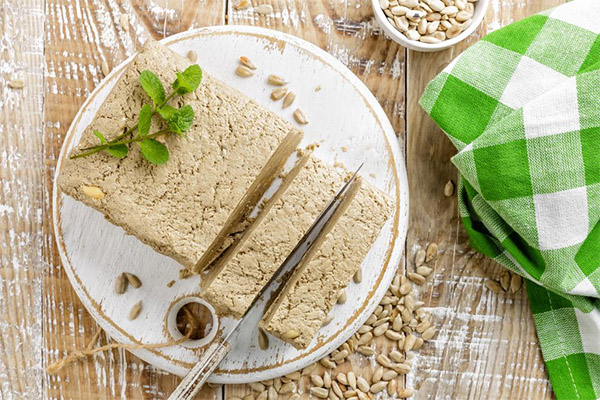
- Thus, it contains dietary fiber, which promotes the digestion of food, as well as protein and vitamins of youth.
- Due to the fact that halva contains substances that are directly involved in oxidative processes, it helps to achieve healthy and beautiful skin, as well as to stimulate the growth of hair and nails. Regular consumption will promote skin elasticity, hair will become smooth and soft, and nails will stop breaking.
- It can be included in diets. Halva can replace many "unhealthy" desserts, because it is not a source of extra calories.
- Vitamin E, which is enough in this dessert, will help cope with difficulties in conception. This feature was noticed back in ancient times. Then many concubines of the sultan tried to eat as much halva as possible to give birth to an heir.
Based on all this, the best "snack" for every woman will be a small piece of halva. It will help improve appearance, brain activity, attention, and improve mood.
For men
Speaking about the benefits of halva for men, it is worth noting that it contains potassium, which has a positive effect on the cardiovascular system of man. It's no secret that after 40 years, many members of the stronger sex are at risk of heart disease, heart attacks and strokes. Regularly taking halva in moderation, you can significantly reduce the likelihood of these diseases and their consequences.
It also "nourishes" the muscles due to the presence of vitamin D, and vitamin E ensures a lush hair. In addition, halva is an excellent aphrodisiac, and men who regularly eat this dessert, do not have problems with potency.
When pregnant
Any doctor will tell you that during pregnancy you need to include in your diet as much as possible products that contain useful substances. That is why halva as a dessert will be so useful to future mothers due to the presence of many important vitamins, macro-and micronutrients. A special role will be played by folic acid, which is so necessary for the normal development of the unborn child.
However, as with everything, there are some peculiarities that should be taken into account:
- You should not consume halva, if the mother has an allergic reaction to the products that are part of its composition.
- It is worth remembering that halva is quite a caloric product, and you should not eat a lot of it. It should also be alternated with other desserts and not eaten every day.
- At the later terms of halva, as well as other sweets, it is worth refraining from it, because it can provoke a malfunction of the gastrointestinal tract, weight gain and bloating.
When breastfeeding
When breastfeeding, products that are good for the mother's body will also have a positive impact on the health of the child. In particular, halva has healing and health-promoting properties, and it also increases the energy value of breast milk. However, sunflower seeds contain an allergen, so you should be careful.
Doctors recommend introducing a small amount of halva into the diet when breastfeeding and monitor the baby's condition. If symptoms of allergies appeared, you should immediately stop eating it. It is also worth remembering that the product is quite "heavy" for a baby in the first months of life.
For children
Halva for children - a great treat, it can be given as a dessert and as a snack. There are many opinions about the age at which it is allowed to give halva to the child: some parents begin to include it in the child's diet from 2 years, others - much later. However, pediatricians recommend to let her eat from 3 years.
The benefits of halva for children:
- is quite easy to digest;
- contains many useful elements and vitamins;
- increases brain function and alertness;
- restores energy;
- improves vascular health and heart function;
- renews cells;
- Improves the overall condition of the skin, hair and teeth;
- boosts mood and energizes;
- Improves the function of the gastrointestinal tract and removes toxins.
Sesame halva: benefits and harms
Sesame halva is the same as tahin halva, but many people perceive them as two separate products. A distinctive feature of sesame halva is that it contains more than 30% fatty acids, so it deserves special attention.
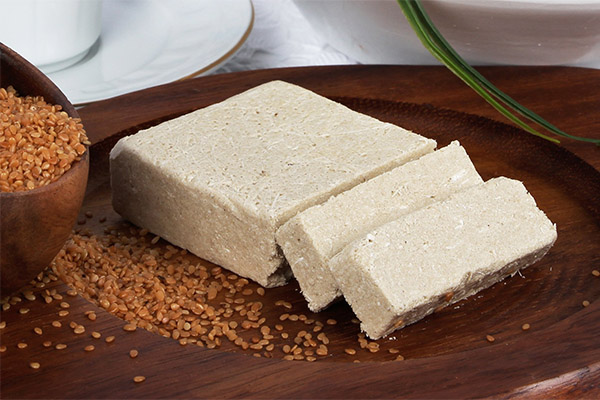
Useful properties of sesame halva:
- The presence of sodium, potassium and iron in the composition helps to normalize the cardiovascular system of the body. Fatty acids prevent the accumulation of cholesterol.
- The presence of potassium, phosphorus and calcium makes halva indispensable for problems with bone tissue. It is enough to eat about 30 grams to provide a quarter of the daily norm of necessary elements. For children, this product is very useful because it helps in the formation of bones, cartilage and teeth.
- Due to the presence of large amounts of iron, doctors recommend consuming sesame halva when anemia.
- The presence of a powerful antioxidant in the form of vitamin A contributes to the complex health of the body.
Possible harm
Despite the useful properties, sometimes halva can cause harm to health and even cause disease. Therefore, include it in the diet should be careful.
What you need to know:
- Sesame seeds and soap root can cause an allergic reaction, so in the case of individual intolerance of these products from the consumption should be refrained.
- Halva contains a lot of sugar, which can result in diathesis.
- If you have a metabolic disorder, you should refrain from eating halva, as it is quite caloric.
- If you abuse the dessert, it can cause metabolic disorders.
The benefits and harms of peanut halva
Peanut halva is considered an oriental sweet, because it is peanuts that are used in the preparation in its homeland.
The value of this halva is directly in the peanut, which transmits all its useful properties to it:
- Peanut halva contains an extremely low amount of cholesterol. In addition, it contains fatty acids that remove cholesterol from the body and does not allow it to accumulate.
- Peanuts contain a lot of strong antioxidants, which have a complex positive effect on the health of the whole body.
- Peanuts are very useful for brain function, as linoleic acid ensures the formation of new cells.
- Peanuts have a positive effect on the overall hormonal balance in the body of any woman and increase the chances of conceiving a child.
Possible harm
It is important to note that peanut halva can be harmful if consumed in unlimited quantities. Do not forget about peanuts, which is quite caloric in itself: 100 g of this product contains about 500 kcal.
Is it possible to eat halva when losing weight
Nutritionists are unanimous in their opinion that halva, and any, is the most useful dessert. However, we should not make a mistake about losing weight. As already mentioned, halva is quite a caloric product, so it should be used very carefully, because to call it dietary is difficult. At the same time it has a lot of dietary fiber and fiber, so it is ideal for snacking even when following a strict diet.
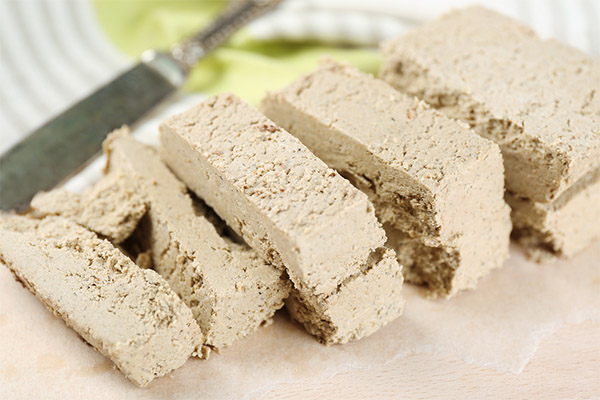
If we talk about what is the most dietary halva, it is, of course, almond halva. It contains a minimum amount of fat, and the taste is much higher than that of sesame or sunflower halva.
It should also be noted that halva is perfectly absorbed by the body. Based on the above, we can safely say that it can be eaten while losing weight, but it is not necessary to abuse the product. In this case, the daily rate should not exceed 40-60 grams.
Halva in medicine
Diabetes mellitus
Diabetes mellitus is an ailment, which is characterized by an increased content of sugar in the blood due to reduced production of insulin by the body. To treat the disease, in addition to a course of treatment, you should adhere to a strict diet. Under a ban may fall many products containing carbohydrates.
As for halva, it too can not be eaten with diabetes. However, if instead of sugar, molasses or honey, fructose was used in the manufacture, then it is not only possible, but also necessary to eat for diabetics. In this case, patients will receive the same range of vitamins and minerals, as if they were eating regular halva, which is important when undergoing treatment and maintaining a strict diet.
Important: The glycemic index of halva sunflower - 70 units.
In pancreatitis
In pancreatitis, the gastric gland practically does not perform its function, so it is categorically impossible to use halva in the acute phase of the disease. The body simply can not cope with the breakdown and digestion of carbohydrates. Also nuts or seeds stimulate the production of pancreatic juice, which is extremely undesirable in the disease. Fibers are also dangerous in this case.
In the remission phase halva should be eaten in small quantities, because it is rich in various useful elements, which are so necessary during this period. However, you need to be very careful and before using it is worth consulting a doctor, as halva can lead to a worsening of the disease and even hospitalization.
In gastritis
The term "gastritis" in medicine refers to a set of ailments that cause irritation of the mucous membrane of the stomach. If we talk about halva, then separately the products that make up its composition do not cause any harm to the patient. However, taken together, they cause irritation, which can lead to a worsening of the disease.
For the intestines
The value of halva for the intestines is the presence of dietary fiber. For a long time, their value has been neglected, considered a kind of unnecessary ballast. But then it turned out that dietary fiber has a positive effect on intestinal peristalsis, and as a consequence, on constipation and diarrhea.
The peculiarity of dietary fiber is that it is not processed in the small intestine, but only in the large intestine, thus stimulating the motility of the stomach. In addition, they saturate it, which dulls the feeling of hunger.
For constipation
Constipation in the body occurs mainly due to the consumption of easily digestible food, which cannot be said about halva. Dietary fiber stimulates the gastrointestinal tract and act as a laxative.
In gout
Gout is a disease that affects the joints due to the accumulation of uric acid salts. Therefore, with this disease, it is important not only to undergo a course of treatment, but also to adhere to a certain diet.
Sweets, particularly halva, is the subject of debate among scientists to this day, so there is no exact answer. With the disease, it is not recommended to eat only chocolate and products that contain purines.
In colitis
Due to the content in halva a lot of useful substances and vitamins, with colitis it can and should be eaten. In particular, in this case, insoluble dietary fiber has a positive effect on the gastrointestinal tract.
However, there are certain nuances. For example, for the preparation of halva uses sunflower seeds, which can accumulate various carcinogenic substances. And with prolonged storage of harmful substances becomes more than useful, which is dangerous in such a disease as colitis.
In hemorrhoids.
Hemorrhoids are a disease associated with impaired blood flow in the lower rectum. As a rule, the disease occurs with improper diet and the use of spicy and spicy foods, as well as alcohol. In addition to a course of treatment, the patient is prescribed a diet, which should include cereals and foods containing dietary fiber. Therefore, halva should definitely be included in the menu for this ailment.
For the liver
Despite the fact that halva is quite a fatty product, which can put pressure on the liver, in general, it is very useful. So, sunflower seeds help to clean the liver vessels and prevent the occurrence of blood clots in the liver. Also they, thanks to the presence of antioxidants, protect its cells and reduce cholesterol levels.
In cholecystitis
When cholelithiasis, when the mucous membrane of the stomach is disturbed, you should not use halva categorically. This is quite a heavy product, and even a small piece can cause aggravation of the disease.
Harm and contraindications
There are no special contraindications for the use of halva. Problems may arise in the case of abuse, because the product has a high caloric content.
You should not use the sweet in the case of individual intolerance of the components, as well as with obesity and atherosclerosis.
How to choose and store correctly
Halva can be sold in two ways - prepackaged and by weight. If you buy it in a supermarket, it is better to choose the one sold in a transparent wrapper. Before buying, you should pay attention to the following points:

- There should be no sugar stains on the surface.
- By color any halva should be light, if there are dark spots, then the production technology is broken.
- There should not be grease spots on the surface of the product.
If halva is purchased by weight, you should pay attention to the presence of husks of sunflower seeds or peanuts. Their presence or absence will show the quality in the best way. If you can try it, do not refuse, a good product is crumbly and does not stick to your teeth.
You can store halva in a pantry or a room where the temperature does not exceed 12°C, and in the refrigerator at 7°C. When the product is open, be sure to put it in any container and close the lid, otherwise it will absorb all the extraneous odors.
How to make halva at home
To prepare a sweet from sunflower seeds is not difficult. You will need seeds, flour and sugar. Before you need to dry half a kilogram of sunflower seeds, to do this, they should be fried until golden, then thoroughly crushed in a blender. In the same frying pan, half a cup of flour should be pasted, add it to the seeds and once again thoroughly grind. The paste should turn out homogeneous and acquire a gray color.
After that you need to prepare the syrup: 70 ml of water per glass of sugar. You should boil it for about 5 minutes on medium heat. At the end add 120-150 ml of sunflower oil.
When ready, put the paste of seeds in a container and pour the syrup. Let the halva cool to room temperature.
Can I eat halva during Lent
Since the composition of halva contains only vegetable substances, it can be eaten during most Lent, including the Great Orthodox Lent.
Interesting facts about halva
Halva is one of the most famous sweets, which is why some facts about it are quite curious:
- Halva was first cooked in modern Iran in the V century BC.
- It is believed that the most delicious sweet in the world are made in its homeland - Iran.
- In Iran, halva is made only by hand, this profession is considered honorary and is passed down by inheritance.
- In Greece, this sweet is made from semolina, olive oil and walnuts, and supplemented with cinnamon and raisins.
«Important: All information on this site is provided for informational purposes only purposes only. Consult your health care professional before applying any recommendations. specialist. Neither the editors nor the authors are liable for any possible harm caused by materials."

